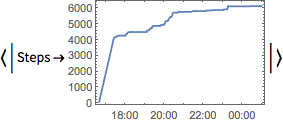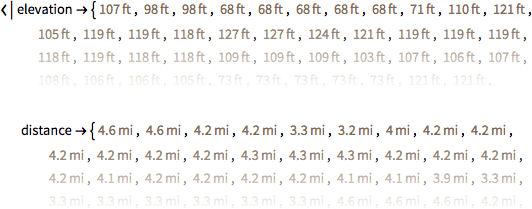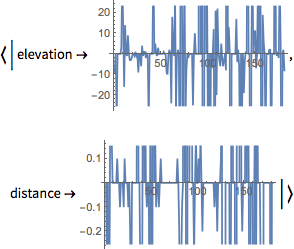Procesamiento de datos
Alise datos por medio de la adopción de un promedio móvil:
| In[1]:= |
| Out[1]= |

|
| In[2]:= |
| Out[2]= |

|
Acumule valores para obtener totales corrientes:
| In[1]:= |
| Out[1]= |

|
| In[2]:= |
| Out[2]= |

|
Encuentre promedios usando bloques de valores:
| In[1]:= |
| Out[1]= |

|
Cambie la escala de cada valor en cada serie temporal:
| In[1]:= |
| Out[1]= |

|
Rescale Normalize Standardize Threshold Clip
Aplique una función a valores en una serie temporal particular:
| In[2]:= |
| Out[2]= |

|
Obtenga listas puras de valores, sin marcas de tiempo:
| In[1]:= |
| Out[1]= |

|
| In[2]:= |
| Out[2]= |

|
Differences LowpassFilter MaxFilter Fourier PowerSpectralDensity
REFERENCIA RÁPIDA: Filtros lineales y no lineales»















